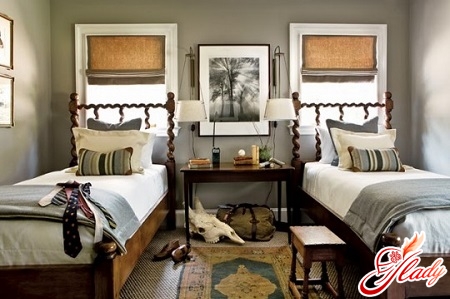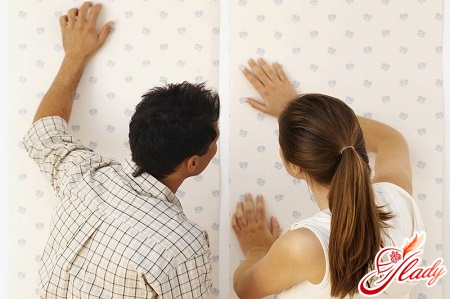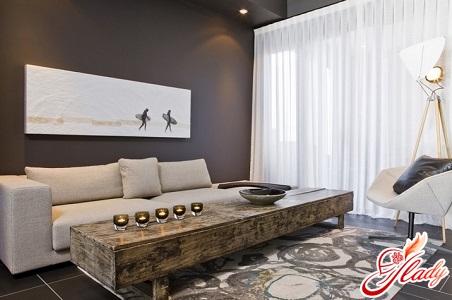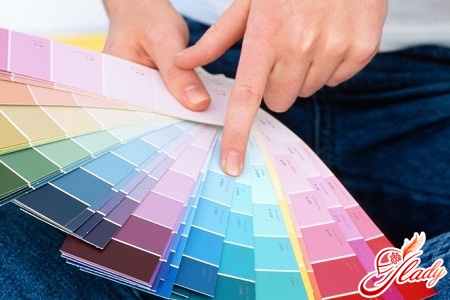 It's no secret that most of theinformation we receive through the organs of sight. The eye fixes the shape of objects, their volume and color, which is one of the important characteristics of the surrounding world. Color - a powerful factor that affects the well-being, mood and performance of each person. Any colors cause a chain of associations in a person, which can change not only his emotional and psychological state, but also his physiological state. This phenomenon is known since ancient times and has long been used in practice. There is an expression: "The walls are crushed." It is not invented for a red word. Indeed, in some rooms it breathes freely, while in others it creates the feeling that the walls and ceiling seem to come together. Not the least role in this perception is played by color. Therefore, the choice of the right color solution of the interior in your home will largely depend on how comfortable it will be to live in it. The combination of colors in the interior is an important aspect, so it is necessary to approach their choice with special care. Anyone who has encountered this problem has difficulty in choosing a gamut, not knowing that there are several universal rules that help to calculate the consequences of any decision. They are based on the relationship of color with the size and function of the room, the color with the elements of the interior and color with the emotional state of the person.
It's no secret that most of theinformation we receive through the organs of sight. The eye fixes the shape of objects, their volume and color, which is one of the important characteristics of the surrounding world. Color - a powerful factor that affects the well-being, mood and performance of each person. Any colors cause a chain of associations in a person, which can change not only his emotional and psychological state, but also his physiological state. This phenomenon is known since ancient times and has long been used in practice. There is an expression: "The walls are crushed." It is not invented for a red word. Indeed, in some rooms it breathes freely, while in others it creates the feeling that the walls and ceiling seem to come together. Not the least role in this perception is played by color. Therefore, the choice of the right color solution of the interior in your home will largely depend on how comfortable it will be to live in it. The combination of colors in the interior is an important aspect, so it is necessary to approach their choice with special care. Anyone who has encountered this problem has difficulty in choosing a gamut, not knowing that there are several universal rules that help to calculate the consequences of any decision. They are based on the relationship of color with the size and function of the room, the color with the elements of the interior and color with the emotional state of the person. 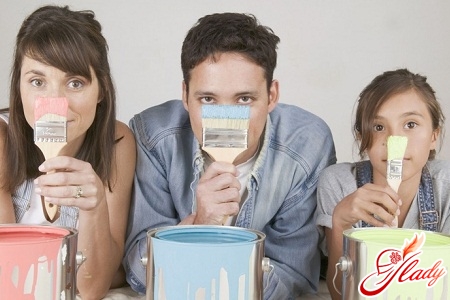
Color combination in a color wheel
Compatibility of colors in the interior is oftenis determined by their location in the color wheel. For the right choice of colors for the interior, you need to have an understanding of the fundamentals of the theory of light. There are so-called primary colors - red, blue and yellow. They are originally in nature and are the basis for other colors. Mixing them, you can get secondary colors, which are also three: purple, green and orange. If you continue mixing the main and secondary colors in pairs, you get six more colors. If they are arranged in a certain order, they can be used to assemble a color circle from twelve colored sectors. But within a single color sector, color can be given an almost infinite variety of shades, adding white and black colors to it in various proportions. All colors in a color circle can be divided conditionally into two groups - warm and cold. To warm colors and shades from yellow to scarlet and red-violet refer, and to cold - from violet to green with a yellow shade. Warm colors are also called approximations, because the surfaces painted in these hues seem visually closer than they really are. Well, and accordingly, cool colors are removing, so the interior in the colors of the cold scale seems more spacious. With the help of a color wheel, it is easy to create color combinations. Close or adjacent colors act soothingly and are considered harmonious. But the academically correct color solution of the interior will look dull and monotonous. The ideal variant is the combination of a harmonious base with the use of a reasonable addition of contrasting strokes. There is another method. This is the use of paints containing several unmixed monocycles, multicolored paints. They provide an opportunity to create smooth combinations. For example, choosing the color of walls for furniture, the set of monocolors includes the color of the furniture set and the shades, which are in harmony with it. So you can choose the color of the walls, which does not merge, but it will not contrast with the whole situation. Modern materials make it possible to create textured surfaces that are inclusions of small droplets, painted in different colors. Such paints are a universal background, in which a variety of decorative elements fit perfectly.
The combination of colors and the size of the room
Color makes it possible to adjustplanning and architectural deficiencies of the premises. That is, using the color of the interior can be changed even geometrically. For example, intense orange or red shades visually reduce the boundaries of the room, and in order to create the illusion of space in a small room, the walls should be painted in gray-green, gray-blue or light-blue color. In small rooms it is better to avoid bright and dark colors, as well as a large pattern. In such rooms, pastel and light colors will be more appropriate. If you select wallpaper in this room, then they should be without contrasting color combinations, with a rare pattern. Using intense colors, you can make large rooms cozy. But they have a tiring effect on vision, so such experiments should be carried out very carefully. A high ceiling can be visually lowered, limiting it to a conditionally narrow border, the color of which is slightly more intense than the color of the walls. According to some designers, the ceiling is better to paint in yellowish or light gray shades, which give it more softness. Often in the attic rooms sloped ceiling or beams literally hang over their heads. Here you can not use the principles of color contrasts - paint the ceiling and walls in one color. A light but high and narrow room will appear lower if its ceiling is painted in gray, beige or even darker - reddish and brown - tones. The reverse is also true: the ceilings painted in white, gray-blue or light-yellow colors will visually appear higher. A narrow long room, the window of which is located on the end short wall, can be visually expanded if the side walls are painted in light colors, while for the end walls, warmer colors should be used. The same visual effects can be achieved by applying wallpaper with ornamentation, stencils and rolls. And for stencil and rolling it is better to choose an inexpressive small ornament, and for wallpaper, on the contrary, bright and large. If you need to visually extend the space, then you will be helped by light wallpaper with horizontal stripes. Vertical same figure will create a visual perception of a higher room. It is also necessary to know that in rooms located in the windows to the north, it is better to use pink-cream and golden-yellow tones. This light palette has the ability to "accumulate" light. If the windows face south-west or south, it gets very hot during the hot seasons and is illuminated by the sun for a long time, then it's better to use the cold palette - gray, blue-green and blue shades. It should also be taken into account that the color of the walls depends significantly on the reflected light of all that surrounds the house. If, for example, there are lawns or trees growing in front of the windows, the walls in the room will be greenish, and if they rest against a brick wall, they are reddish. In this case, the room should avoid the combination in the interior of additional shades of green and red or blue and yellow. 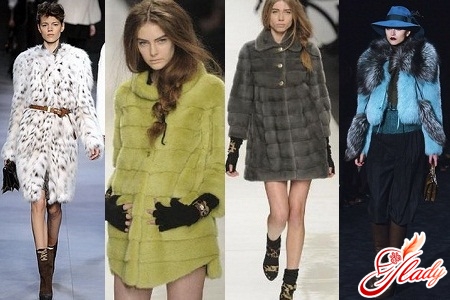
Combination of color and purpose of the room
The rules for combining colors in the interior are based onmatch certain color to the functional purpose of the room. That is, the choice of color palette depends on what you want to achieve from a particular room. For example, a living room in a manor house where a large family lives, serves as their permanent residence place, so its color must be calm, promote a good mood and relaxation. Here, yellow-green, golden, gray-green, gray-blue and other colors from low to medium saturation can be used. In cottages and mansions, where a small family lives, the living room is used, mainly, for the reception of guests and evening rest. Therefore, it can be solved in saturated tones, which contribute to a festive, upbeat mood. It can be blue, purple and purple. The bedroom is created for rest, therefore here should reign atmosphere of calmness. She most corresponds to the coldish blue tones and warm yellow. If at the same time the bedroom serves as a working room, then light gray-blue, gray-green and other neutral colors are recommended, which contribute to concentrated work and mental activity. Children love bright saturated colors. Despite this, they greatly tire the child and act on his psyche, so it is desirable to paint the child in muted tones. For example, white, ocher, blue, light green and gray. But here in the interior you can include bright furniture, rugs, bedspreads and other decorative objects. The room intended for the elderly will be correctly decorated in a calm color scheme without sharp contrasts. Preferably green, gray, beige and calm brown tones and for finishing the cabinet. Most often the hall suffers from lack of daylight. It's easy to fix a light color palette. In the hallway, light colors are also recommended. And if its walls are covered with boards, it is better to preserve the natural shade of wood. For the kitchen, blue-green and bleached blue colors are best suited, which create the impression of space and coolness. If the apartment has a combined kitchen-dining room, then you can use a rich green and blue colors. At the same light kitchen furniture and equipment will beautifully shade the dark background, due to what the room will look elegant. Often, the kitchen is wood. Light boards, which are covered with walls, perfectly combined with wooden furniture, bright dishes, decorative and tableware, as well as kitchen accessories made of colored plastic. The bathroom is mostly modest in size, so it's better to decorate it in very bleached, clean colors - turquoise, blue, pink, lilac. Although in such private places the glazed tile of saturated blue, red and even black color looks extravagant. If your home is dominated by wall openings and arches, and there are no closed doors, that is, you have space viewed from one another, you can use the nuance effect. In this case, the color gamut is selected according to the principle of different saturation and tonality of one color, and any color can be chosen that is combined with accessories, furniture and other decorative elements. Do not forget about such decorative elements as socle, stucco molding, railing, slats, curbs, window frames. If you want to highlight them, then this can be done using lighter shades compared to walls. Glossy and semi-gloss paints will help in this case.
The combination of color and emotion
The prevailing color of the interior is able to change ourmood and emotional state. To properly choose the colors in the interior, you need to know what effect this or that color has on a person. Despite the fact that color-induced associations are different in people of different ages and cultural groups, there are nevertheless many common reactions that allow us to talk about its general, international influence.
- Blue and blue color of the interior are associated withcoolness, calm and silence. This is the color of the distant sky and bottomless depth. And the deeper the blue, the more he gives the person more relaxation and a sense of peace. Blue and light blue colors cause a feeling of lightness and carelessness. A pure blue color makes you want to play and fool around.
- Red is tension, passion and excitement. He has an exciting effect on man, and scientists attribute this to an ancient association with blood and fire. This is a very strong color, it attracts powerful people. In addition, it has a stimulating effect on the nervous system, a beneficial effect on the liver, encourages movement.
- Yellow. Its meaning is dual. On the one hand, it means liberation, joy, wealth, the sun, but on the other hand it is the color of anxiety, betrayal, betrayal. It is a yellow color and a symbol of insight. Yellow color for the interior is chosen by people seeking liberation.
- Green color. It is formed by a combination of yellow and blue colors. This is the color of potential energy, static and rest. The green color is cool, and the colder it is, the more blue it contains. If the green color is more yellow, then it becomes more active and warmer. Green color is unlimited in its shades. Conservative and calm, reliable and loyal people choose this color for the interior of their home.
Summarizing all of the above, it becomesit is clear that the combination of different shades in the interior is an important task, which in decorating the room should be approached with all responsibility. Knowing at least the basic laws of the influence of color and knowing how to correctly choose its combinations, you can harmonize your surrounding space, making life a little brighter. We advise you to read:





